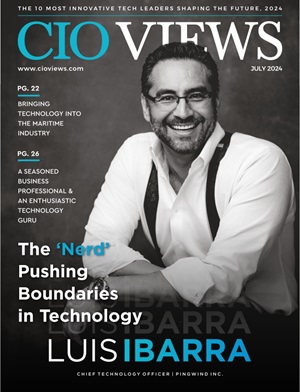
In August, 2019 Michael Mathews, Vice President of Technology and Innovation (ORU) heard music to his ears as Dr. Joe May Chancellor of Dallas County Community College District (DCCCD) shouted ‘victory’ down all educational corridors across higher education. What he shouted was the truth about the shortcomings of how students get access to their academic records. The essence of this truth that has long been unaddressed is penned in the article posted by Timothy J. Marshall, Chief Innovation Officer at DCCCD.
“Students will have wide-ranging access to their academic records anytime, anyplace, by simply clicking a button. The innovation was born of a problem affecting students and potential employers alike. It became apparent to DCCCD Chancellor Dr. Joe May that current and former students are missing out on job opportunities because they can’t get transcripts when colleges are closed for holidays, breaks, etc. Additionally, the red tape for students to gain access to their records was lengthy. “DCCCD is committed to the educational success of our students, not only while they’re enrolled in our colleges, but long after they leave and embark upon their own career journeys,” Dr. May said. “We’re in the barrier-busting business, effectively setting our students on the path toward career success.”
 The innovative solution created by DCCD is in essence a digital credential ecosystem on a Blockchain-based technology known as IBM’s Distributed Ledger Fabric by Greenlight Credentials. This ecosystem is a breakthrough as it is no longer attached to the inward-focused student information system or learning management system that revolves on the student life-cycle within one educational institution. Rather it is focused on a supply-chain that allows students and employers to be connected to each other. The new connection allows digital access to educational assets, educational journeys, credentials, careers, jobs, recruiters, and most importantly personalized pathways for students into promising careers.
The innovative solution created by DCCD is in essence a digital credential ecosystem on a Blockchain-based technology known as IBM’s Distributed Ledger Fabric by Greenlight Credentials. This ecosystem is a breakthrough as it is no longer attached to the inward-focused student information system or learning management system that revolves on the student life-cycle within one educational institution. Rather it is focused on a supply-chain that allows students and employers to be connected to each other. The new connection allows digital access to educational assets, educational journeys, credentials, careers, jobs, recruiters, and most importantly personalized pathways for students into promising careers.
When college presidents and chancellors start echoing the reality that students deserve to have instant access to their academic records — things begin to change. When they deepen that commitment by saying, ‘we are in the barrier-breaking business to ensure students have a path toward career success’, they are saying let’s use a fresh system that allows connectively and alignment with all our stakeholders. If presidents and chancellors were trained in logistics they would simply say we need a supply-chain based on a distribution of all our prospective students, career pathways, employers, the workforce projections – also known as a Blockchain-based distributed ledger that offers instant and secure access to the students.

What Dallas County Community College District leaders and other educational leaders interested in ‘breaking barriers’ for students are openly admitting includes:
- The current systems that focus on the student-life cycle are great for the inward processes for each institution; but we need an outward focus that connects and aligns all future students to their educational journey and career pathway within one ecosystem.
- That an ecosystem that handles the academic records as part of a person’s digital credentials must be secure and extended outside of the campus and be accessible throughout the lifetime of the individual.
- That student records must be accessible 7x24x365 by the students to ensure students can share their credentials for all potential job offers.
- If an educational institution is truly concerned with the career and employability of graduates, they must be connected in a supply-chain fashion. The supply-chain includes the supply of students from K12 and a supply of students as employers for the workforce.
The passion, tenacity, and desire of educational leaders have been hindered in the past as the educational systems could not accommodate the connectivity and alignment that spanned K12, K20, and the workforce. Tens of thousands of students have lost out on being aligned and connected to the perfect job and career due to this lack of connectivity and alignment. Fortunately, the recent development of Blockchain-based systems like Pistis and Greenlight Credentials now provide the solutions that presidents and chancellors have been waiting for. At its highest level, Blockchain is a new form of supply-chain that brings connectivity and alignment to whomever is on the distributed ledger that makes up the defined Blockchain hyper ledger.

The initial words that were music to Michael Mathews’ ear is still playing a sweet melody in his ears. The melody is ‘change is on the horizon, thanks to digital credentials with Blockchain-based technology.’




















